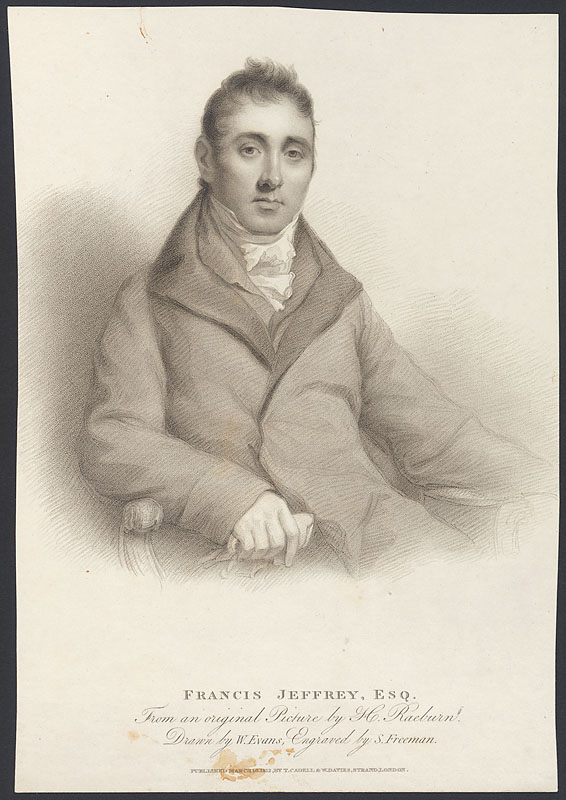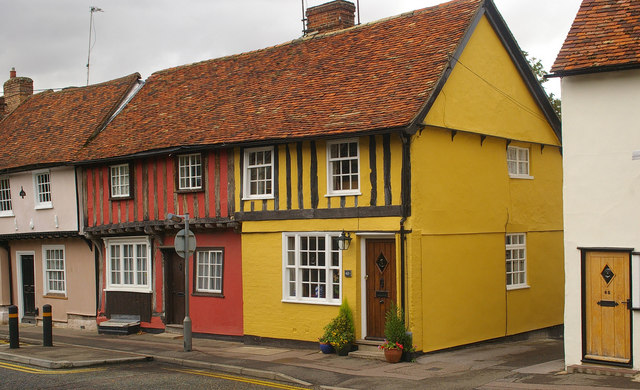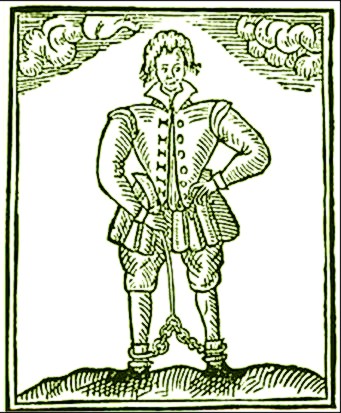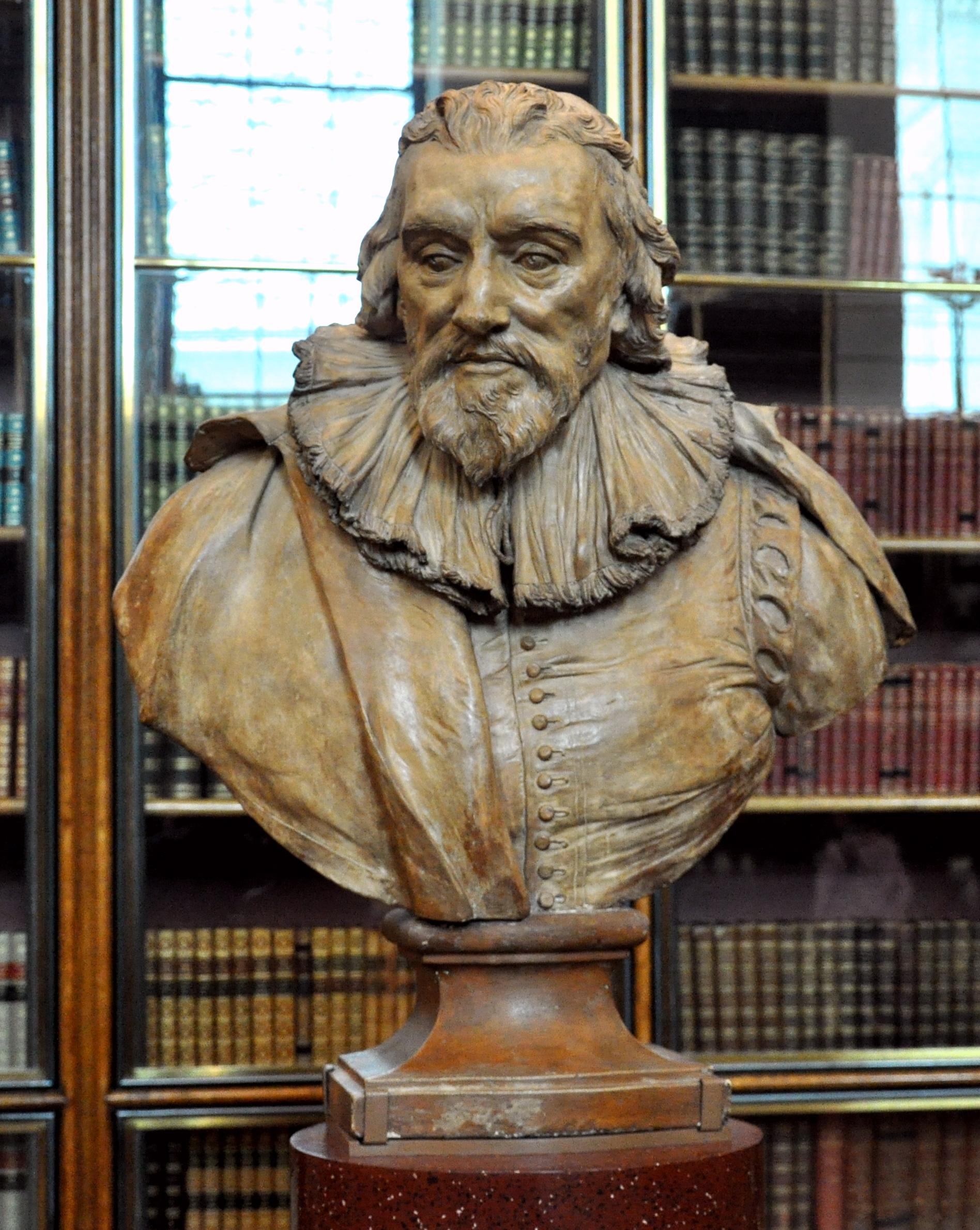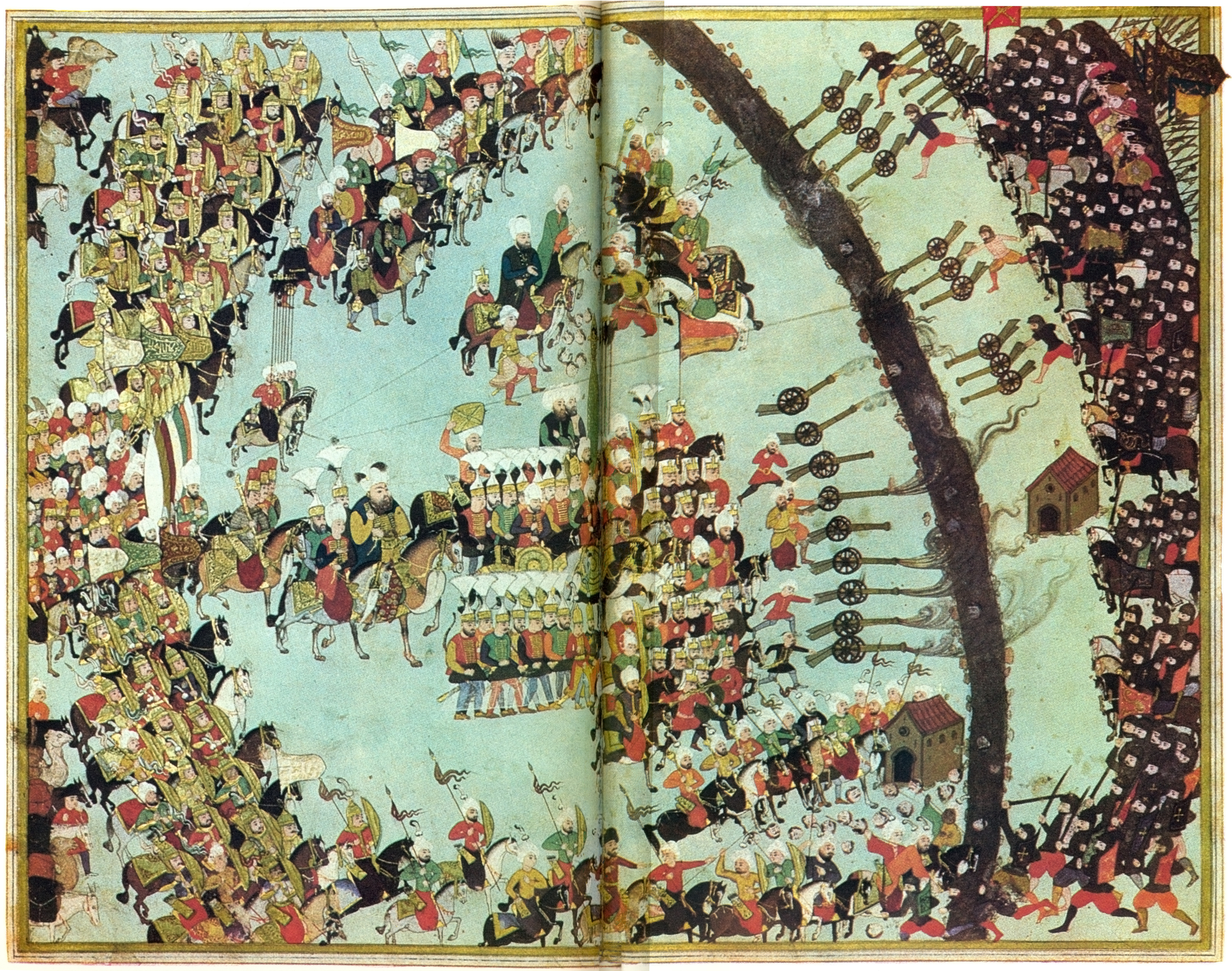|
Have With You To Saffron-Walden
"Have With You To Saffron-Walden, Or, Gabriell Harveys hunt is up" is the title of a pamphlet written by Thomas Nashe and published in London in late 1596 by John Danter. The work is Nashe's final shot in his four-year literary feud with Dr. Gabriel Harvey. It consists of title-page, epistle dedicatory, an address to "all Christian Readers", and a lengthy dialogue between five characters. The title page makes it clear to the reader that the purpose of the pamphlet is to attack Gabriel Harvey, whose 1593 pamphlet vilifying Nashe had until then gone unanswered. Saffron Walden was Harvey's birthplace and he seems to have withdrawn there to live sometime in 1593. The epistle dedicatory is to Richard Lichfield, a barber-surgeon of Cambridge noted for his ability to make humorous, mock-academic orations. Nashe, who clearly knows something of Lichfield but may not have known him personally, at first addresses him in hyperbolic terms of exaggerated respect. The language chosen for th ... [...More Info...] [...Related Items...] OR: [Wikipedia] [Google] [Baidu] |
Gabriel Harvey
Gabriel Harvey (c. 1552/3 – 1631) was an English writer. Harvey was a notable scholar, whose reputation suffered from his quarrel with Thomas Nashe. Henry Morley, writing in the ''Fortnightly Review'' (March 1869), has argued that Harvey's Latin works demonstrate that he was distinguished by qualities very different from the pedantry and conceit usually associated with his name. Family Gabriel Harvey was the eldest son of John Harvey (d.1593), a yeoman farmer and master ropemaker from Saffron Walden, Essex, and his wife, Alice (d.1613). He had two younger brothers, Richard and John (d. July 1592), and a sister, Mercy. Education Harvey received his early education at the town's grammar school, and matriculated at Christ's College, Cambridge, in 1566. In 1570 he was elected fellow of Pembroke Hall. Here he formed a friendship with Edmund Spenser, who may have been his pupil. Promotion of hexameter verse Harvey wished to be "epitaphed as the Inventour of the English Hexameter," a ... [...More Info...] [...Related Items...] OR: [Wikipedia] [Google] [Baidu] |
Thomas Nashe
Thomas Nashe (baptised November 1567 – c. 1601; also Nash) was an Elizabethan playwright, poet, satirist and a significant pamphleteer. He is known for his novel ''The Unfortunate Traveller'', his pamphlets including ''Pierce Penniless,'' and his numerous defences of the Church of England. Life Nashe was the son of the parson William Nashe and Janeth (née Witchingham). He was born and baptised in Lowestoft, on the coast of Suffolk, where his father, William Nashe, or Nayshe as it is recorded, was curate. Though his mother bore seven children, only two survived childhood: Israel (born in 1565) and Thomas.Nicholl, Charles. ''A Cup of News: The Life of Thomas Nashe''. Routledge & Kegan Paul. 1984. The family moved to West Harling, near Thetford, in 1573 after Nashe's father was awarded the living there at the church of All Saints. Around 1581 Thomas went up to St John's College, Cambridge, as a sizar, gaining his bachelor's degree in 1586. From references in his own polemics ... [...More Info...] [...Related Items...] OR: [Wikipedia] [Google] [Baidu] |
Literary Feud
A literary feud is a conflict or quarrel between well-known writers, usually conducted in public view by way of published letters, speeches, lectures, and interviews. In the book ''Literary Feuds'', Anthony Arthur describes why readers might be interested in the conflicts between writers: "we wonder how people who so vividly describe human failure (as well as triumph) can themselves fall short of perfection." Feuds were sometimes based on conflicting views of the nature of literature as between C. P. Snow and F. R. Leavis, or on disdain for each other's work such as the quarrel between Virginia Woolf and Arnold Bennett. Some feuds were conducted through the writers' works, as when Alexander Pope satirized John Hervey in '' Epistle to Dr Arbuthnot''. A few instances resulted in physical violence, such as the encounter between Sinclair Lewis and Theodore Dreiser, and on occasion involved litigation, as in the dispute between Lillian Hellman and Mary McCarthy. History of litera ... [...More Info...] [...Related Items...] OR: [Wikipedia] [Google] [Baidu] |
Saffron Walden
Saffron Walden is a market town in the Uttlesford district of Essex, England, north of Bishop's Stortford, south of Cambridge and north of London. It retains a rural appearance and some buildings of the medieval period. The population was 15,504 at the 2011 census. History Archaeological evidence suggests continuous settlement on or near the site of Saffron Walden from at least the Neolithic British Isles, Neolithic period. It is believed that a small Romano-British culture, Romano-British settlement and fort – possibly in the area round Abbey Lane – existed as an outpost of the much larger settlement of Great Chesterford, Cestreforda to the north. After the Norman conquest of England, Norman invasion of 1066, a stone church was built. Walden Castle, dating from about 1140, may have been built on pre-existing fortifications. A priory, Walden Abbey, was founded under the patronage of Geoffrey de Mandeville, 1st Earl of Essex about 1136, on the site of what is now Audley En ... [...More Info...] [...Related Items...] OR: [Wikipedia] [Google] [Baidu] |
Richard Lichfield
Richard Lichfield (died 1630) was a barber surgeon in Cambridge, England, during the late 16th and early 17th century. In 1597 he wrote a pamphlet sharply criticising the writer Thomas Nashe, which for many years was believed to be the work of Gabriel Harvey. Although not a member of the academic community Lichfield belonged to the property-owning middle class, and had a local reputation as a humorist. His humour took the form of parodies of learned speeches, complete with phony Latinisms, evidently a popular genre at Cambridge and one in which other barbers are also said to have excelled. Nashe's pamphlet ''Have with You to Saffron-Walden "Have With You To Saffron-Walden, Or, Gabriell Harveys hunt is up" is the title of a pamphlet written by Thomas Nashe and published in London in late 1596 by John Danter. The work is Nashe's final shot in his four-year literary feud with Dr. Gab ...'' (1596) had been dedicated to Lichfield in a provocative and slyly insolent way. After a ... [...More Info...] [...Related Items...] OR: [Wikipedia] [Google] [Baidu] |
Robert Bruce Cotton
Sir Robert Bruce Cotton, 1st Baronet (22 January 1570/71 – 6 May 1631) of Conington Hall in the parish of Conington in Huntingdonshire, England,Kyle, Chris & Sgroi was a Member of Parliament and an antiquarian who founded the Cotton library. Origins He was born on 22 January 1571 in Denton, Huntingdonshire, the son and heir of Thomas Cotton (1544–1592) of Conington (son of Thomas Cotton of Conington Sheriff of Huntingdonshire in 1547) by his first wife Elizabeth Shirley, a daughter of Francis Shirley of Staunton Harold in Leicestershire. The Cotton family originated at the manor of Cotton, Cheshire, from which they took their surname. Education Cotton was educated at Westminster School where he was a pupil of the antiquarian William Camden, under whose influence he began to study antiquarian topics. He began collecting rare manuscripts as well as collecting notes on the history of Huntingdonshire when he was seventeen. He proceeded to Jesus College, Cambridge, where he ... [...More Info...] [...Related Items...] OR: [Wikipedia] [Google] [Baidu] |
Fee-fi-fo-fum
"Fee-fi-fo-fum" is the first line of a historical quatrain (or sometimes couplet) famous for its use in the classic English fairy tale "Jack and the Beanstalk". The poem, as given in Joseph Jacobs' 1890 rendition, is as follows: Fee-fi-fo-fum, I smell the blood of an Englishman, Be he alive, or be he dead I'll grind his bones to make my bread. Though the rhyme is tetrametric, it follows no consistent metrical foot; however, the lines correspond roughly to a monosyllabic tetrameter, a dactylic tetrameter, a trochaic tetrameter, and an iambic tetrameter respectively. The poem has historically made use of assonant half rhyme. Origin The rhyme appears in the 1596 pamphlet " Haue with You to Saffron-Walden" written by Thomas Nashe, who mentions that the rhyme was already old and its origins obscure: In William Shakespeare's play ''King Lear'' (c. 1605), in Act III, Scene IV, the character Edgar referring to the legend of Childe Rowland exclaims: Fie, foh, and fum, I smell ... [...More Info...] [...Related Items...] OR: [Wikipedia] [Google] [Baidu] |
1596 Books
Events January–June * January 6– 20 – An English attempt led by Francis Drake to cross the Isthmus of Panama ends in defeat. * January 28 – Francis Drake dies of dysentery off Portobelo. * February 14 – Archbishop John Whitgift begins building his hospital at Croydon. * April 9 – Siege of Calais: Spanish troops capture Calais. * May 18 – Willem Barents leaves Vlie, on his third and final Arctic voyage. * June – Sir John Norreys and Sir Geoffrey Fenton travel to Connaught, to parley with the local Irish lords. * June 10 – Willem Barents and Jacob van Heemskerk discover Bear Island. * June 17 – Willem Barents discovers Spitsbergen. * June 24 – Cornelis de Houtman arrives in Banten, the first Dutch sailor to reach Indonesia.. July–December * July 5 – Capture of Cádiz: An English fleet, commanded by Robert Devereux, 2nd Earl of Essex, and Lord Howard of Effingham, sacks Cádiz. * July 14 – King Dominicus Corea (Edirille Bandara) is beheaded ... [...More Info...] [...Related Items...] OR: [Wikipedia] [Google] [Baidu] |
Early Modern English Literature
English literature is literature written in the English language from United Kingdom, its crown dependencies, the Republic of Ireland, the United States, and the countries of the former British Empire. ''The Encyclopaedia Britannica'' defines English literature more narrowly as, "the body of written works produced in the English language by inhabitants of the British Isles (including Ireland) from the 7th century to the present day. The major literatures written in English outside the British Isles are treated separately under American literature, Australian literature, Canadian literature, and New Zealand literature." However, despite this, it includes literature from the Republic of Ireland, "Anglo-American modernism", and discusses post-colonial literature. ; See also full articles on American literature and other literatures in the English language. The English language has developed over the course of more than 1,400 years. The earliest forms of English, a set of Anglo-Fri ... [...More Info...] [...Related Items...] OR: [Wikipedia] [Google] [Baidu] |
Satirical Books
Satire is a genre of the visual, literary, and performing arts, usually in the form of fiction and less frequently non-fiction, in which vices, follies, abuses, and shortcomings are held up to ridicule, often with the intent of shaming or exposing the perceived flaws of individuals, corporations, government, or society itself into improvement. Although satire is usually meant to be humorous, its greater purpose is often constructive social criticism, using wit to draw attention to both particular and wider issues in society. A feature of satire is strong irony or sarcasm —"in satire, irony is militant", according to literary critic Northrop Frye— but parody, burlesque, exaggeration, juxtaposition, comparison, analogy, and double entendre are all frequently used in satirical speech and writing. This "militant" irony or sarcasm often professes to approve of (or at least accept as natural) the very things the satirist wishes to question. Satire is found in many artisti ... [...More Info...] [...Related Items...] OR: [Wikipedia] [Google] [Baidu] |

